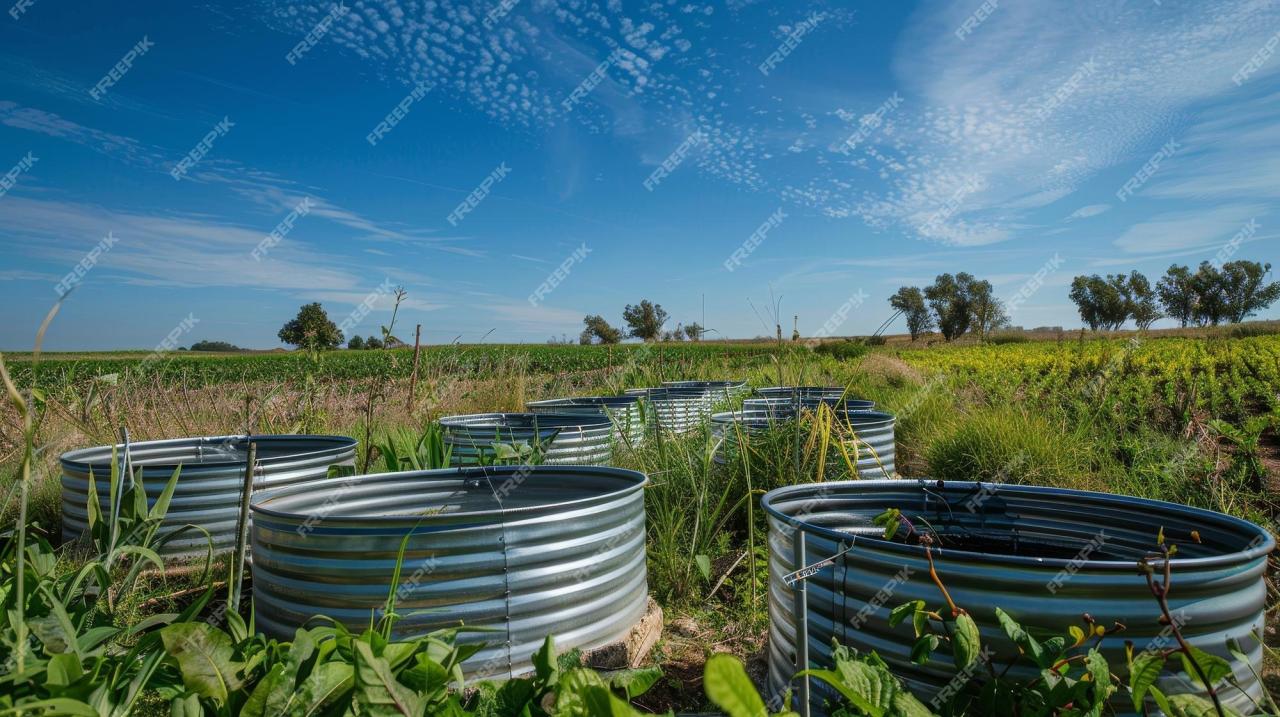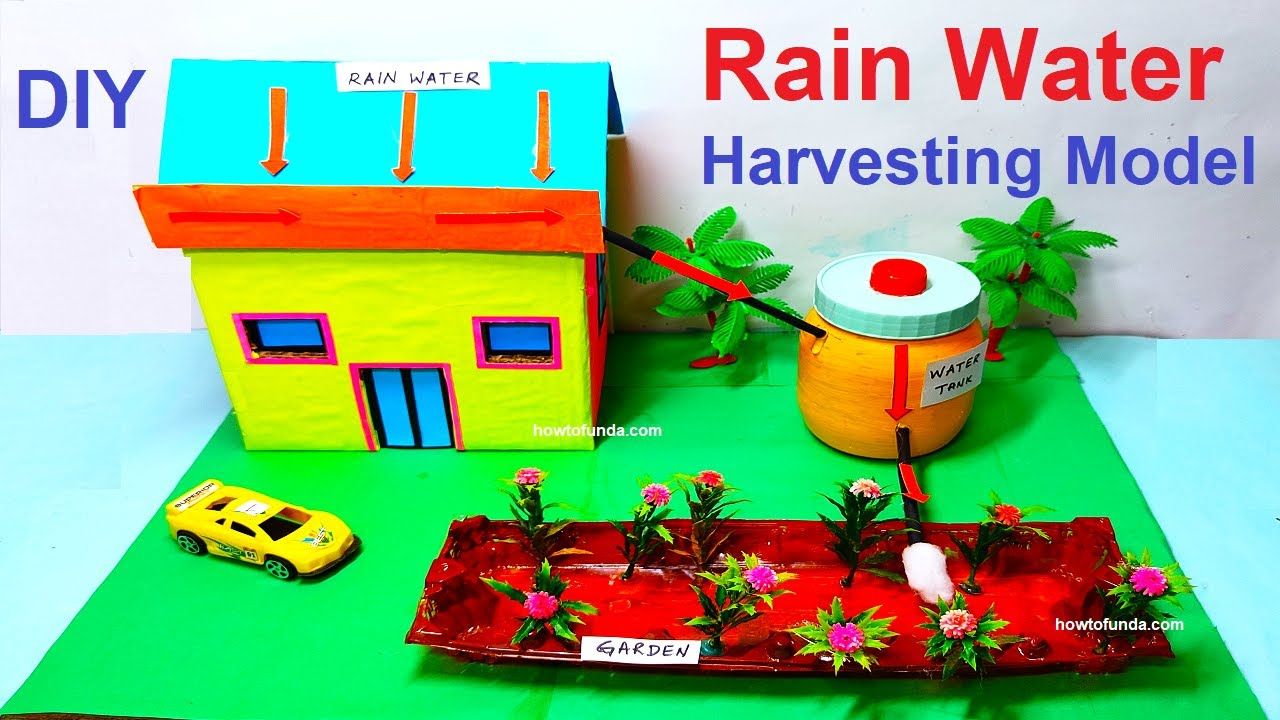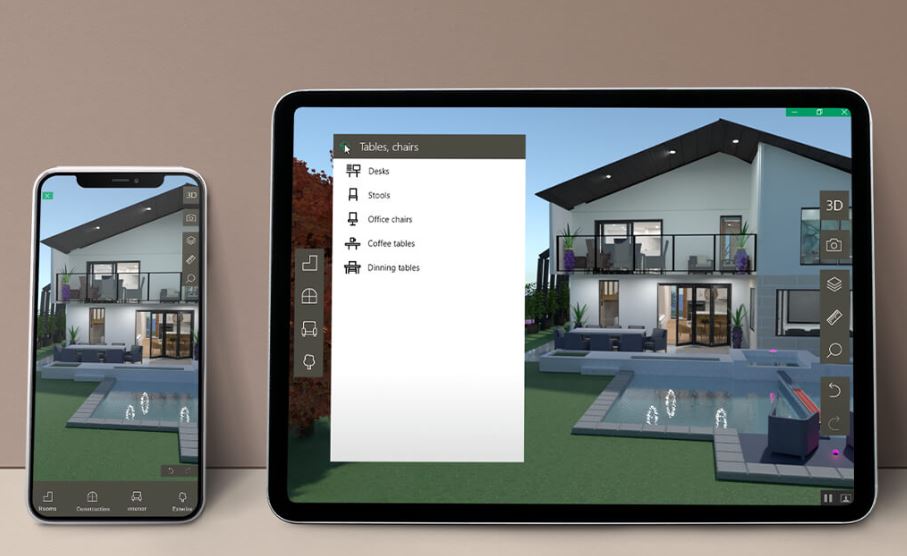Rainwater harvesting house offers a practical and eco-friendly solution for water needs. It’s a smart way to conserve water resources and reduce reliance on municipal supplies, especially in areas facing water scarcity. This approach leverages rainwater collected from rooftops for various household uses, showcasing a commitment to sustainability and environmental responsibility.
The process involves collecting rainwater, storing it, and treating it for safe use in homes. Different systems offer varying levels of complexity and efficiency, catering to diverse needs and budgets. This guide explores the entire process, from design and construction to maintenance and legal considerations.
Introduction to Rainwater Harvesting Houses
A rainwater harvesting house is a structure designed to collect, store, and utilize rainwater for various household purposes, reducing reliance on municipal water supplies. This innovative approach to water management offers significant environmental and economic advantages, particularly in areas with water scarcity or high water costs.The core principle behind rainwater harvesting systems in residential settings is simple: capture rainwater from rooftops or other suitable surfaces, filter it to remove impurities, store it in designated tanks, and then use it for non-potable applications like irrigation, toilet flushing, and laundry.
This system leverages a natural resource, minimizing the strain on local water sources.
History and Evolution of Rainwater Harvesting
Rainwater harvesting isn’t a new concept. Historically, civilizations worldwide have employed rainwater collection for agriculture and domestic use, often in arid and semi-arid regions. Early methods involved simple collection systems using natural depressions or constructed channels. Modern advancements in materials and engineering have led to more sophisticated and efficient rainwater harvesting systems, suitable for integration into contemporary residential designs.
Environmental Benefits of Rainwater Harvesting
Utilizing rainwater for household needs offers numerous environmental benefits. Reduced reliance on municipal water sources translates to lower demand for water treatment and distribution, leading to decreased energy consumption and reduced greenhouse gas emissions. Furthermore, rainwater harvesting can help conserve precious freshwater resources, especially in water-stressed regions. This is particularly important in areas experiencing droughts or water shortages.
Types of Rainwater Harvesting Systems
Various rainwater harvesting systems are commonly employed in residential settings, each with its own characteristics and applications. The selection of a system depends on factors like the local climate, the available space, and the specific needs of the household.
Comparison of Rainwater Harvesting System Types
| System Type | Water Collection Method | Storage Capacity | Maintenance Requirements |
|---|---|---|---|
| Rooftop Collection System | Rainwater is collected from the roof using gutters and downspouts. | Storage tanks can range from small barrels to large cisterns, depending on the amount of water needed. | Regular gutter cleaning, tank inspection, and filter maintenance are necessary. |
| Ground-level Collection System | Rainwater is collected directly from ground surfaces or permeable pavements. | Similar storage options as rooftop systems, tailored to the amount of collected water. | Regular inspection of collection surfaces and storage tanks for debris and blockages. |
| Combined System | Combines rooftop and ground-level collection for maximum water capture. | Larger storage capacity to accommodate water from multiple sources. | Combined maintenance requirements of both rooftop and ground-level systems. |
Design and Construction
Rainwater harvesting systems, when implemented correctly, offer a sustainable and cost-effective solution for water conservation. This section details the key aspects of designing and constructing a basic system for a small house, covering system design, installation steps, material considerations, and necessary equipment.Designing a rainwater harvesting system involves careful planning and consideration of the house’s architectural features and local climate.
The design should prioritize efficient water collection, storage, and distribution. A well-structured system will ensure minimal water loss and maximize water use for various purposes.
Basic Rainwater Harvesting System Design
A basic rainwater harvesting system for a small house typically involves collecting rainwater from the roof, filtering it, and storing it in a tank. The collected water can then be used for non-potable purposes like irrigation or toilet flushing. A diagram illustrating this system is provided below.  *(Diagram: A simple sketch showing the roof connected to gutters, downspouts leading to a storage tank, and a filter. The diagram should also show a water distribution system from the tank for garden or toilet use.)*The system components include:
*(Diagram: A simple sketch showing the roof connected to gutters, downspouts leading to a storage tank, and a filter. The diagram should also show a water distribution system from the tank for garden or toilet use.)*The system components include:
- Roof: The roof surface collects the rainwater.
- Gutters: Channels that direct rainwater from the roof to the downspouts.
- Downspouts: Tubes that carry rainwater from the gutters to the collection system.
- First-flush diverter: A device that diverts the initial, heavily contaminated rainwater runoff to prevent it from entering the storage tank. This often consists of a simple gutter section or a specialized diverter.
- Filter: Removes debris and impurities from the collected water.
- Storage tank: A container to store the collected rainwater.
- Distribution system: Piping to distribute water to designated areas.
Installation Steps, Rainwater harvesting house
Proper installation is crucial for a functioning and efficient rainwater harvesting system. The following steps Artikel the process:
- Site Assessment: Determine the suitable location for the storage tank, considering factors like ground slope, water table, and proximity to the house.
- Roof Preparation: Ensure gutters and downspouts are in good condition and correctly positioned to maximize rainwater collection.
- Tank Installation: Carefully install the storage tank, ensuring it’s level and securely mounted.
- Plumbing Connections: Connect the downspouts to the tank and the filter using appropriate plumbing materials.
- Filter Installation: Install a suitable filter to remove impurities from the collected water.
- Distribution System Installation: Set up the distribution piping for water delivery to the intended use areas.
- Testing and Commissioning: Thoroughly test the system to ensure proper functionality and leak-free operation.
Roof Materials for Rainwater Collection
Different roof materials have varying levels of suitability for rainwater collection.
- Concrete/Clay Tiles: These are durable and provide good water collection, but may require more extensive cleaning to remove debris.
- Metal Roofs (Aluminum, Steel): These are generally good at collecting water, but can sometimes be prone to rust if not properly maintained.
- Asphalt Shingles: These are more prone to shedding debris and might require more frequent cleaning compared to other materials.
- Wood Shingles: These can be susceptible to damage and require regular maintenance, potentially impacting water collection efficiency.
Roof Slope and Drainage
An optimal roof slope and drainage system are essential for efficient rainwater collection. A gentle slope allows for faster runoff and reduces the risk of water stagnation, which can promote the growth of algae and other microorganisms.
Materials and Equipment
The following table Artikels the materials and quantities needed for a small-scale rainwater harvesting system.
| Material | Quantity | Cost Estimate |
|---|---|---|
| Storage Tank (500L) | 1 | $150-$250 |
| Gutters (20m) | 1 | $50-$100 |
| Downspouts (10m) | 2 | $20-$40 |
| Filter | 1 | $20-$50 |
| Plumbing Fittings | Various | $20-$50 |
*(Note: Cost estimates are approximate and can vary based on location, material quality, and specific requirements.)*
Water Quality and Treatment

Source: archi-monarch.com
Rainwater harvesting houses are super cool for conserving water. They’re great for reducing your water bill, but they can also be combined with a smart thermostat house, like Smart thermostat house , to create a truly sustainable home. These systems can help optimize energy usage by adjusting heating and cooling based on real-time weather conditions and water availability, making your home even more efficient and eco-friendly.
Ultimately, rainwater harvesting houses are a fantastic step towards a more environmentally conscious approach to home design.
Rainwater harvesting systems offer a sustainable alternative for water supply, but the quality of collected rainwater can vary significantly depending on the environment. Understanding the factors affecting water quality and implementing appropriate treatment methods is crucial for ensuring safe and reliable use of harvested water. This section delves into the importance of water quality, methods for maintaining quality, and various treatment processes.Ensuring the quality of collected rainwater is paramount for human health and the well-being of the environment.
Rainwater harvesting houses are becoming increasingly popular, especially in areas with water scarcity. They’re a great way to conserve water, which is important in the design of a tiny modern house like Tiny modern house. These smaller homes often prioritize efficiency, and rainwater harvesting systems perfectly complement that ethos. A rainwater harvesting house is a sustainable and practical solution for modern living.
Contaminants can enter the system at various stages, from the initial collection to storage and distribution. Addressing these contaminants through appropriate treatment methods is essential for creating a safe and dependable water source.
Importance of Water Quality
The quality of rainwater is significantly influenced by atmospheric conditions, the surrounding environment, and the design of the harvesting system. Contaminants such as dust particles, pollutants from industrial or agricultural activities, and even bird droppings can be carried into the collection system. Poor water quality can lead to health risks if consumed without proper treatment. For instance, if a roof is located near a busy road, the rainwater will likely contain particulate matter and exhaust fumes.
Methods for Ensuring Rainwater Quality
Several methods can be employed to ensure the quality of collected rainwater. These methods include proper roof design, efficient gutter systems, and careful selection of storage containers. Using a well-maintained gutter system minimizes the chances of contaminants entering the collection system. Selecting appropriate storage containers, like tanks made of non-reactive materials, can also help maintain water purity.
Treatment Processes for Improving Rainwater Quality
Treating harvested rainwater enhances its quality and safety. Various methods can be employed to remove impurities and make the water suitable for various uses. The specific treatment process will depend on the level of contamination.
- Sedimentation: This method involves allowing the rainwater to settle in a tank or reservoir. Heavier particles, such as dust and debris, will sink to the bottom, leaving clearer water above. This is often the first step in a multi-stage treatment process. Sedimentation tanks can be relatively inexpensive to install and maintain, but require adequate space.
- Filtration: Using filters, such as sand filters or charcoal filters, can remove finer particles and impurities from the water. This process effectively removes suspended particles and some dissolved impurities, improving the clarity and taste of the water. The type of filter used will depend on the desired level of purification.
- Disinfection: Disinfection methods, such as chlorination or ultraviolet (UV) treatment, eliminate harmful microorganisms. Chlorination is a common and relatively inexpensive method. UV treatment is an alternative that does not add chemicals to the water.
Rainwater Treatment Methods Comparison
| Treatment Method | Effectiveness | Cost |
|---|---|---|
| Sedimentation | Removes larger particles | Low |
| Filtration (sand) | Removes smaller particles and some dissolved impurities | Medium |
| Filtration (charcoal) | Removes organic compounds and odors | Medium-High |
| Chlorination | Effective against bacteria and viruses | Low |
| UV Disinfection | Effective against bacteria and viruses, no chemical addition | Medium-High |
Maintaining Water Quality
Regular maintenance is essential for maintaining the quality of harvested rainwater. This includes inspecting the system for leaks or damage, cleaning gutters and filters regularly, and replacing filters as needed. Regular cleaning prevents the buildup of contaminants and ensures the system continues to provide clean water. For example, cleaning gutters twice a year prevents debris from accumulating and clogging the system.
Rainwater harvesting is a great way to conserve water, especially in a modern countryside home. For example, a rainwater harvesting house, like those often found in Modern countryside homes , can significantly reduce water bills and be really environmentally friendly. It’s a smart choice for any house, really.
System Components and Functions
Rainwater harvesting systems are made up of several interconnected components, each playing a crucial role in collecting, filtering, and distributing the water. Understanding these components and their functions is essential for designing and maintaining a successful system. Properly designed systems ensure efficient water collection and reduce reliance on municipal water supplies.A well-designed rainwater harvesting system is a vital component of sustainable water management, especially in areas with limited access to or fluctuating availability of potable water sources.
The components of such a system work together to capture and purify rainwater, making it suitable for various non-potable uses.
Key Components
The core components of a rainwater harvesting system are designed to effectively capture, store, and filter rainwater. These include gutters, downspouts, collection tanks, filters, and distribution systems. Each component plays a specific role in the overall process.
Component Functionalities
| Component | Function |
|---|---|
| Gutters | Gutters are typically made of metal or plastic and are installed along the edges of roofs to channel rainwater runoff towards downspouts. They prevent water from spreading over the roof and ensure efficient collection. |
| Downspouts | Downspouts are vertical pipes connected to gutters. They direct the collected rainwater from the gutters to the collection system, usually leading to a collection tank. |
| Collection Tanks | Collection tanks are the storage reservoirs for the harvested rainwater. They come in various sizes and materials, depending on the intended use and available space. They can be above-ground or underground, with the latter offering better protection from the elements and potential for aesthetic integration. |
| Filters | Filters are essential components to remove debris, sediment, and other impurities from the collected rainwater. They are strategically placed within the system to prevent clogging of distribution pipes and ensure clean water. Different types of filters are available, from simple mesh screens to more sophisticated filtration systems, depending on the desired level of purification. |
| Distribution Systems | Distribution systems consist of pipes and fittings that deliver the harvested rainwater to designated locations, such as gardens, toilets, or other non-potable uses. The pipes are typically made of durable materials resistant to corrosion and water damage. |
System Flow Diagram
Imagine rainwater falling on a roof. The water flows down the roof, gathering in gutters. From the gutters, the water is channeled through downspouts to the collection tank. The tank stores the water until needed. Before being used, the water typically passes through filters to remove any contaminants.
Finally, the filtered water is distributed through pipes to the intended use locations.A typical flow diagram would show rainwater falling on the roof, then moving through the gutters, downspouts, and into the collection tank. From there, the water would pass through a filter before being distributed to various points of use.
Legal and Regulatory Aspects
Navigating the legal landscape surrounding rainwater harvesting is crucial for the successful implementation of a system. Understanding local regulations and obtaining necessary permits are essential steps to avoid potential issues and ensure compliance. This section explores the legal considerations involved in rainwater harvesting, from local building codes to water rights.
Local Regulations and Building Codes
Local building codes and regulations often dictate the permissible methods and requirements for rainwater harvesting systems. These regulations can vary significantly depending on the region, encompassing factors like system design, water storage capacity, and drainage considerations. Understanding these specific requirements is vital for ensuring a compliant and functional system.
Rainwater harvesting houses are becoming increasingly popular for their eco-friendly approach. They’re designed to collect and reuse rainwater, reducing reliance on municipal water supplies. This sustainable approach to home design often complements a calming, minimalist aesthetic, like that found in a Zen interior house. Ultimately, a rainwater harvesting house can be a beautiful and practical addition to any home.
Permits and Approvals
Depending on the region and the scale of the rainwater harvesting system, permits and approvals might be necessary. These approvals can be required for both the installation and operation of the system. The specific permit requirements vary widely and are influenced by factors like the system’s size, the intended use of the harvested water, and the local jurisdiction’s specific regulations.
For example, some municipalities may require a detailed design plan, while others may require only a simple notification of the proposed installation.
Legal Considerations for Water Rights and Ownership
Water rights and ownership are critical considerations in rainwater harvesting. Depending on the local jurisdiction, there may be regulations regarding the collection and use of rainwater. These regulations may dictate the ownership of the collected water and any potential restrictions on its use. It’s crucial to understand the specific water rights regulations in the area to avoid any conflicts or legal challenges.
Summary of Local Regulations
| Region | Regulations | Permits Required |
|---|---|---|
| California, USA | Specific regulations exist for rainwater harvesting, often requiring permits for systems exceeding a certain capacity or using the water for non-potable purposes. | Yes, usually required for systems above a specific size and/or usage. |
| Florida, USA | Regulations vary by county and municipality. Some areas may have specific requirements for the materials used in the system, or for the quality of the collected water. | Yes, often required for systems larger than a specific capacity, and possibly for the discharge of treated water. |
| United Kingdom | Generally, rainwater harvesting is permitted, but regulations may exist concerning the design and installation of the system. | Likely, but may vary depending on the size and location of the installation. |
| Australia | Rainwater harvesting is relatively common and usually permitted with certain stipulations for water quality and discharge. | Yes, usually required for large systems and/or those discharging water. |
Note: This table provides a general overview. Specific regulations should be verified with the relevant local authorities.
Maintenance and Troubleshooting

Source: freepik.com
Proper maintenance is crucial for the longevity and efficiency of a rainwater harvesting system. Regular checks and cleaning prevent blockages, leaks, and other issues that can compromise water quality and system performance. Addressing problems promptly minimizes disruptions and ensures a consistent supply of collected rainwater.Effective maintenance involves a proactive approach, encompassing regular inspections, cleaning, and repairs. This proactive strategy will safeguard the system’s integrity, enhancing its overall reliability and minimizing potential disruptions to your water supply.
Regular Maintenance Procedures
Regular maintenance tasks are vital for a functioning rainwater harvesting system. These tasks encompass a range of activities, from simple visual inspections to more involved cleaning procedures. Consistent upkeep ensures the system operates smoothly and effectively.
- Visual Inspections: Regularly inspect all components of the system, including the roof, gutters, downspouts, collection tank, and distribution pipes. Look for signs of damage, leaks, or blockages. This simple step can prevent major issues from developing.
- Cleaning Gutters and Downspouts: Regular cleaning of gutters and downspouts is essential to prevent debris buildup. This buildup can lead to clogs, reducing the amount of rainwater collected and potentially damaging the system. Use a garden hose or a gutter cleaning tool to remove leaves, twigs, and other debris.
- Tank Cleaning: Periodically clean the collection tank. This is often done every few months or annually, depending on the usage rate and the local environment. Cleaning removes algae, sediment, and other contaminants. Follow manufacturer recommendations for cleaning solutions and procedures.
- Filter Maintenance: If your system includes a filter, follow the manufacturer’s instructions for cleaning and replacing it. A clogged filter can significantly reduce water flow and water quality.
- System Flushing: Regularly flush the system to remove any sediment or debris that might have accumulated. This step can be performed periodically, perhaps quarterly or semi-annually, to ensure optimal water quality and flow.
Identifying and Troubleshooting Common Problems
Prompt identification and resolution of issues are crucial for maintaining a functional rainwater harvesting system. A systematic approach to troubleshooting can pinpoint the source of problems, leading to swift and effective solutions.
- Low Water Collection: Low water collection may indicate several potential problems, including blocked gutters, damaged downspouts, or leaks in the system. Thoroughly inspect the entire system to identify the source of the problem.
- Water Quality Issues: If the collected rainwater has an unpleasant odor or color, it could indicate contamination. Inspect the system for potential sources of contamination, such as leaks or improper filtration. Testing the water quality can help determine the severity and source of the issue.
- Leaks: Leaks can lead to significant water loss and damage to the surrounding area. Carefully inspect all connections and joints in the system for any signs of leaks. Use a leak detection solution to identify the exact location of the leak.
- System Clogs: Clogs can occur in any part of the system, from gutters to the collection tank. Inspect for blockages in gutters, downspouts, and filters. Clearing blockages will restore the system’s efficiency.
Cleaning and Maintaining System Components
This section details the specific steps for cleaning and maintaining key components of a rainwater harvesting system.
- Gutters and Downspouts: Use a garden hose to thoroughly clean leaves, debris, and other obstructions from gutters and downspouts. Ensure proper drainage to prevent water accumulation and overflow.
- Collection Tank: Use a mild cleaning solution, following manufacturer recommendations. Thoroughly rinse the tank to remove all traces of cleaning solution. Inspect the tank for any damage or signs of deterioration.
- Pipes and Fittings: Inspect pipes and fittings for any signs of damage, leaks, or corrosion. Use a cleaning solution to remove any mineral buildup or other debris. Replace damaged components as needed.
- Filters: Clean or replace filters as per manufacturer instructions. Clogged filters can reduce water flow and water quality.
Troubleshooting Table
This table provides a quick reference for common problems and their solutions.
Rainwater harvesting houses are becoming increasingly popular, and for good reason. They’re a great way to conserve water, which is especially important in areas with limited resources. This often ties in nicely with an indoor-outdoor lifestyle house, Indoor-outdoor lifestyle house , allowing for greater use of the collected rainwater for gardens and other outdoor needs. Ultimately, rainwater harvesting houses are a sustainable and practical choice for environmentally conscious homeowners.
| Problem | Solution |
|---|---|
| Low water collection | Inspect gutters, downspouts, and system for blockages or leaks. |
| Water quality issues | Inspect for contamination sources. Test water quality and address the source of contamination. |
| Leaks | Inspect all connections and joints for leaks. Use a leak detection solution to pinpoint the leak. |
| System clogs | Clear blockages in gutters, downspouts, and filters. |
Economic and Financial Aspects
Rainwater harvesting systems, while offering numerous environmental benefits, need careful consideration of their economic implications. Understanding the upfront costs, ongoing expenses, and potential long-term savings is crucial for making informed decisions. This section will explore the financial aspects of implementing a rainwater harvesting system.
Initial Costs
The initial cost of a rainwater harvesting system varies significantly based on the system’s size, complexity, and materials used. Factors like the roof area, storage capacity, and filtration needs all contribute to the overall price tag. Basic systems, often employing simple collection gutters and storage tanks, can be relatively inexpensive, while more advanced setups with sophisticated filtration and distribution components will increase the initial investment.
For example, a residential system serving a small household might cost a few thousand dollars, whereas a larger commercial or agricultural system could easily exceed tens of thousands of dollars.
Ongoing Expenses
Beyond the initial investment, ongoing expenses for a rainwater harvesting system are generally lower compared to relying solely on municipal water. However, certain costs remain. Maintenance of the system, including gutter cleaning, tank inspections, and filter replacements, can accumulate over time. These costs, though manageable, should be factored into the overall budget. Furthermore, the cost of energy for pumping water from the storage tank to the point of use, if applicable, needs to be considered.
Regular maintenance can prevent costly repairs down the line.
Cost Comparison with Conventional Water Sources
Comparing the cost of rainwater harvesting to traditional water sources involves a nuanced evaluation. While the initial investment for rainwater harvesting can be substantial, the long-term cost savings often outweigh the upfront expenses. The cost of municipal water varies significantly by location and usage, but in many areas, rainwater harvesting can result in substantial cost reductions over the life of the system.
For example, in regions experiencing water scarcity or high water rates, the cost savings from rainwater harvesting can be particularly compelling. Additionally, if water conservation is incentivized by local governments, rainwater harvesting can yield further cost benefits.
Potential Long-Term Cost Savings and Return on Investment
The long-term cost savings of a rainwater harvesting system are often substantial, making it a potentially lucrative investment. By reducing reliance on municipal water, homeowners and businesses can save money on their water bills over the system’s lifespan. The return on investment (ROI) varies based on factors like water rates, system size, and maintenance costs. For instance, a household in an area with high water rates may see a faster ROI compared to a household in a region with relatively low water rates.
In addition, the environmental benefits of reduced water consumption, a crucial factor in today’s world, can be considered a form of indirect ROI.
Financial Benefits and Drawbacks
| Benefit/Drawback | Description |
|---|---|
| Initial Investment | Can be substantial, depending on the system’s size and complexity. |
| Ongoing Maintenance | Includes gutter cleaning, tank inspections, filter replacements, and potential pumping costs. |
| Reduced Water Bills | Significant savings compared to relying solely on municipal water, especially in areas with high water rates. |
| Water Security | Provides a reliable source of water during droughts or water shortages. |
| Environmental Benefits | Reduces water consumption and environmental impact. |
| Potential for Increased Property Value | May increase the value of a property in environmentally conscious markets. |
| Return on Investment | Varies depending on factors like water rates, system size, and maintenance costs. |
Environmental Impact and Sustainability
Rainwater harvesting is a powerful tool for mitigating the environmental impact of our water usage, especially in regions facing water scarcity. By capturing and utilizing rainwater, we can reduce our reliance on municipal water systems, lessen the strain on natural resources, and contribute to a more sustainable lifestyle. This approach is particularly vital in arid and semi-arid climates where access to potable water is often limited.By reducing our dependence on treated municipal water, rainwater harvesting decreases the energy consumption associated with water treatment and distribution.
This directly translates to a lower carbon footprint and a more environmentally friendly approach to water management.
Water Conservation Benefits
Rainwater harvesting significantly reduces water consumption from municipal supplies. By collecting and utilizing rainwater for non-potable uses like irrigation, laundry, and toilet flushing, homes and communities can substantially decrease their overall water demand. This reduction directly translates to less strain on existing water infrastructure and resources. For instance, in California, a significant portion of residential water usage can be replaced by rainwater collection, effectively easing the pressure on local reservoirs during drought periods.
Impact on Water Scarcity
In arid and semi-arid regions, rainwater harvesting is crucial for ensuring water security. These areas often experience prolonged periods of drought, leading to water shortages and impacting agricultural productivity and human well-being. Rainwater harvesting provides a vital alternative water source, allowing communities to maintain essential activities and reduce their vulnerability to water stress. For example, in parts of the Middle East, rainwater harvesting systems are becoming increasingly common, supporting agricultural practices and ensuring access to clean water for domestic use.
Carbon Footprint Reduction
Rainwater harvesting directly contributes to a lower carbon footprint. Municipal water systems require significant energy for treatment, pumping, and distribution. By reducing the need for municipal water, rainwater harvesting lowers the associated energy consumption and, consequently, greenhouse gas emissions. This is particularly significant in areas with high energy-intensive water treatment processes. A study in Arizona, for example, showed that rainwater harvesting reduced energy consumption in residential areas by an average of 15%, directly impacting the carbon footprint.
Contribution to a Sustainable Lifestyle
Rainwater harvesting promotes a more sustainable lifestyle by minimizing the environmental impact of water consumption. It encourages a conscious approach to water resource management, encouraging individuals and communities to take responsibility for their water needs. This shift toward self-sufficiency and reduced reliance on external water sources fosters a greater sense of environmental stewardship and responsibility. By adopting rainwater harvesting techniques, individuals and communities can reduce their environmental footprint and contribute to a more sustainable future.
End of Discussion

Source: pinimg.com
In conclusion, a rainwater harvesting house represents a significant step towards a more sustainable future. By collecting and utilizing rainwater, homeowners can reduce their environmental footprint and potentially save money in the long run. The process, though requiring initial investment, ultimately offers substantial environmental and economic benefits. It’s a compelling option for anyone looking to build or retrofit their home with a focus on sustainability.
Commonly Asked Questions
What are the common roof materials suitable for rainwater harvesting?
Different roof materials have varying water collection efficiencies. Clay tiles, metal, and asphalt shingles are common choices, but their performance can differ based on their surface texture and porosity. The ideal material depends on the specific system design and local climate conditions.
How much does a small-scale rainwater harvesting system cost?
The cost of a small-scale system varies significantly based on the size, complexity, and materials used. Factors like labor costs, tank size, and filter requirements all play a role in the overall price. Detailed cost estimates are provided in the design and construction section.
What are the local regulations regarding rainwater harvesting systems?
Regulations vary greatly by region. Some areas have specific guidelines for rainwater harvesting systems, requiring permits or approvals. It’s crucial to consult local building codes and regulations before initiating any project.
What are some common problems with rainwater harvesting systems, and how are they solved?
Common problems include clogs in gutters or downspouts, leaks in collection tanks, and issues with water quality. Regular maintenance and prompt troubleshooting are key to ensuring the smooth operation of the system. Detailed solutions for various problems are included in the maintenance and troubleshooting section.
- Minimalist Glass Design A Deep Dive - June 2, 2025
- Rainwater Harvesting House A Sustainable Home - May 6, 2025
- Natural Ventilation HouseA Sustainable Choice - May 6, 2025









